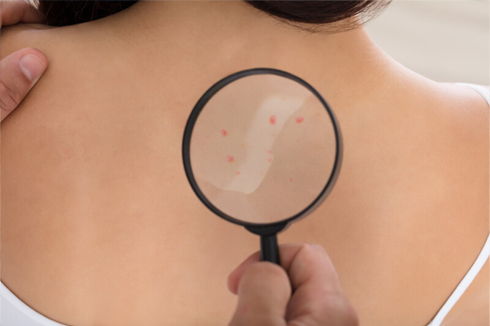
Most skin cancers are caused by excessive sun exposure. People with fair skin, blonde or red hair, and light colored eyes are at greater risk of developing a skin cancer because they are more susceptible to sun damage.
Also, if a family member has had a skin cancer, there is increased risk of having skin cancer. Anyone, no matter what their skin type, can develop a skin cancer. One in five Americans will develop a skin cancer in their life time.
The most common type of skin cancer is Basal Cell Carcinoma (BCC). It may look like a shiny bump that is pink or reddish or it can be an area that is a non-healing sore. BCCs rarely spread to vital organs and the cure rate is close to 100% when detected and treated early.
Squamous Cell Carcinoma
Squamous Cell Carcinoma (SCC) is the second most common skin cancer and it affects an estimated 700,000 people in the U.S. every year. About 2,500 people die from invasive SCC every year. SCCs appear as rough, thick, crusty or wart-like spots that may bleed. Early detection usually leads to a very successful treatment of this skin cancer.
Melanoma
Melanoma is the most serious form of skin cancer. It is estimated that there will be more than 76,000 new cases of melanoma diagnosed annually in this country and nearly 9,500 will die from this disease. Detecting and treating melanoma early can be lifesaving, but if left untreated, it can spread to vital organs and become life-threatening. Growths that change rapidly in size or have irregularities in color and shape should be evaluated by your dermatologist.
For monthly self examination of new or existing moles, follow the “ABCDE” signs of melanoma:
A: Asymmetry-one half of the mole does not match the other.
B: Boarder irregularities-the edges of the mole are notched or ragged.
C: Color-various shades of brown, black, pink or tan are in the same mole.
D: Diameter-the abnormal mole is bigger than 6 millimeters (the size of a pencil eraser).
E: Evolving-the mole is changing size, shape and shades of color.
If your mole or moles are demonstrating any of these signs, see your dermatologist for a check of these moles.
